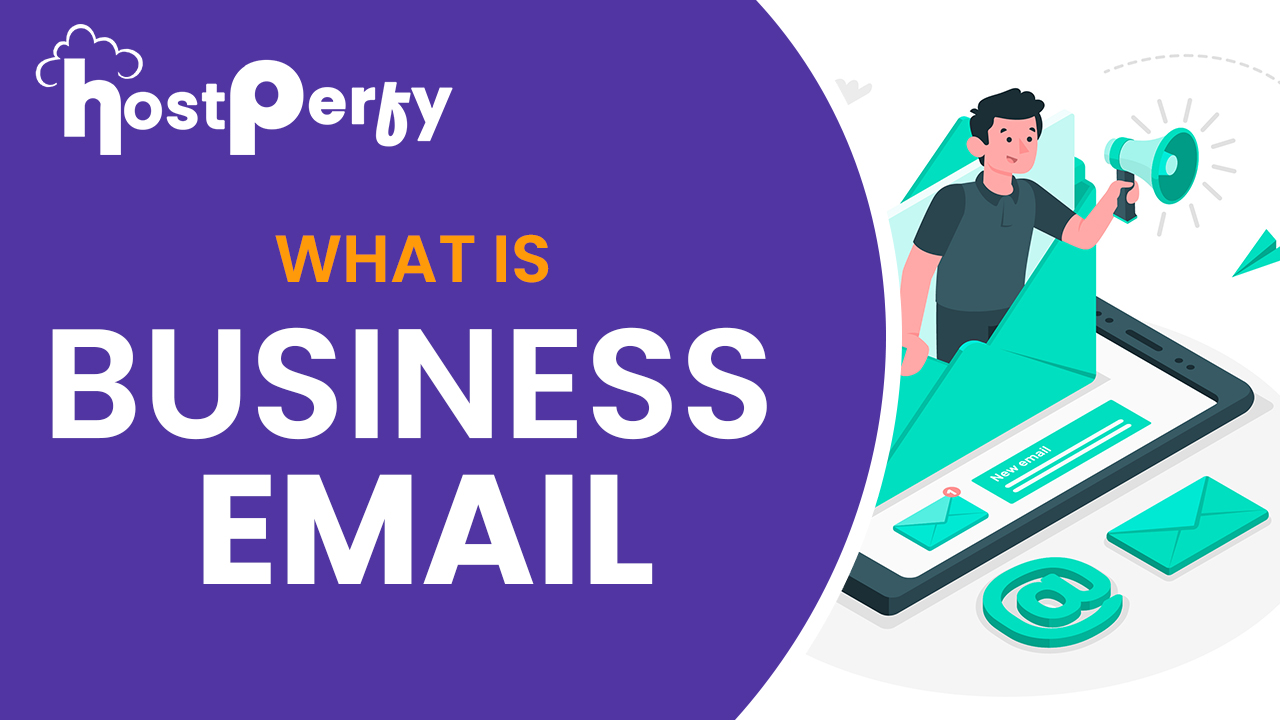Business mail
A business email is not just a regular email but an email that consists of the domain name of your company. The email address of a business email is different from a free email service like Gmail, Yahoo, or Outlook. For example, instead of using an address like joey@gmail.com, a business email address would be joey@yourcompanyname.com.
Business email has become a main source of communication at work that plays a significant role in establishing rapport with clients, customers, chief executives, sponsors, suppliers, etc.
This is the basic definition of a Business Email. Further in the article, we will cover the advantages of Business emails over regular free emails and what is the proper format for building a business email with suitable examples. Read the entire article to understand basic concepts with ease.
Business emails offer several advantages over using free email services. Let’s discuss them one by one.
- Mark Professionalism
Credibility: A business email gives you a professional outlook and shows your company’s sincerity. With a business email, your approach toward your clients appears to be impressive
Business emails along with a proper formal and professional tone to your message can help you establish your authority and build trust.
- Source of Branding
Whenever you connect your target audience with the email named with your company, it promotes your brand/company and enhances its recognition.
Maintaining consistency and sticking to a single domain name with all your clients and customers lets you build trust and helps your brand evolve as strong and honest.
- Build trust and ensure security
Emails that reach out with custom domains are less likely to be marked as spam mail, this ensures that your message reaches the client.
- Can distinguish departments with specific names
Business emails give you options to use separate names for separate departments for example, sale@companyname.com, hr@companyname.com, and support@companyname.com.
Many times you also get the option to create an alias address for different departments which directs all the emails to a central inbox.
- Email Marketing
Running a branding campaign through emails mainly with a business email increases the chances of success of that campaign as it offers trust, honesty, and a formal appearance to the clients. People tend to open emails that look reliable.
It can also lead to a higher return on investment (ROI).
How to set up a proper Business Email?
Step 1: choose a name for your domain that represents your business
Step 2: Choose a reliable email hosting provider that provides business emails like Google Workspace, Microsoft 365, etc.
Step 3: set up your email account for the company, employees, and departments.
Step 4: set up your email client like Gmail, Outlook, or Apple Mail to send and receive mail from your clients.
Step 5: implement necessary security measures such as spam filtering, encryption, and multi-factor authentication to protect your communication.
What is the proper format for a business email?
A professionally written and well-structured email is very important for the image of your brand. A proper and formally written email conveys an impactful message which has to be clear and attractive.
Here are some key elements which has to be kept in mind while writing a business email:
Sender’s name: include your company’s name or employee’s name. example- Joey from Google.
Subject line: always try to keep the subject line short, it should not be more than 6 to 10 words. For example: Meeting Reminder
Preheader: it is a one-sentence summary that directly complements the subject line. For example: Don’t miss the meeting tomorrow at 7 P.M.
Greeting: Choose to write an appropriate greeting based on the formality you are reaching. The greeting can be divided into 3 categories: Very formal, formal, and friendly.
- Very formal- Dear Mr.Smith, I am writing to you in response…..
- Formal- Dear Daisy I would like to tell you…
- Friendly- Hi Sam, we are glad to see you on our team…
Email body: start your message with a clear explanation of your approach. Always try to use short paragraphs, bullets, pointers, or numbers. At the end conclude with a summary and CTA
Sign off and signature: Thanks in advance, Thank you, and best regards, are good options to sign off your email.
A dummy Business email:
From: Joey from Google
Subject line: Project status discussion
Preheader: Prepare the updates on the ongoing project to discuss in the meeting.
Dear Team,
I hope this email finds you well,
I want to inform you to join the regular Project status discussion meeting on time. There are certain updates on our current project.
- We are on track to meet our guidelines.
- Finalize your client presentation by Friday.
- We will discuss the review on Thursday, at 10 A.M.
All these pointers will be further discussed in our regular meeting today @7 P.M. Don’t forget to join.
Please let me know if you have any queries.
Best Regards,
Joey Lien
Project Manager, Google
123456
Concluding up
Business email is crucial for professional communication and brand-building. A business email that includes your company’s domain name enhances credibility, and trust, and promotes your brand. If you use this marketing tool in the wrong way you can severely damage your brand’s/ company’s image. It is a responsible task and it needs to be managed properly.

